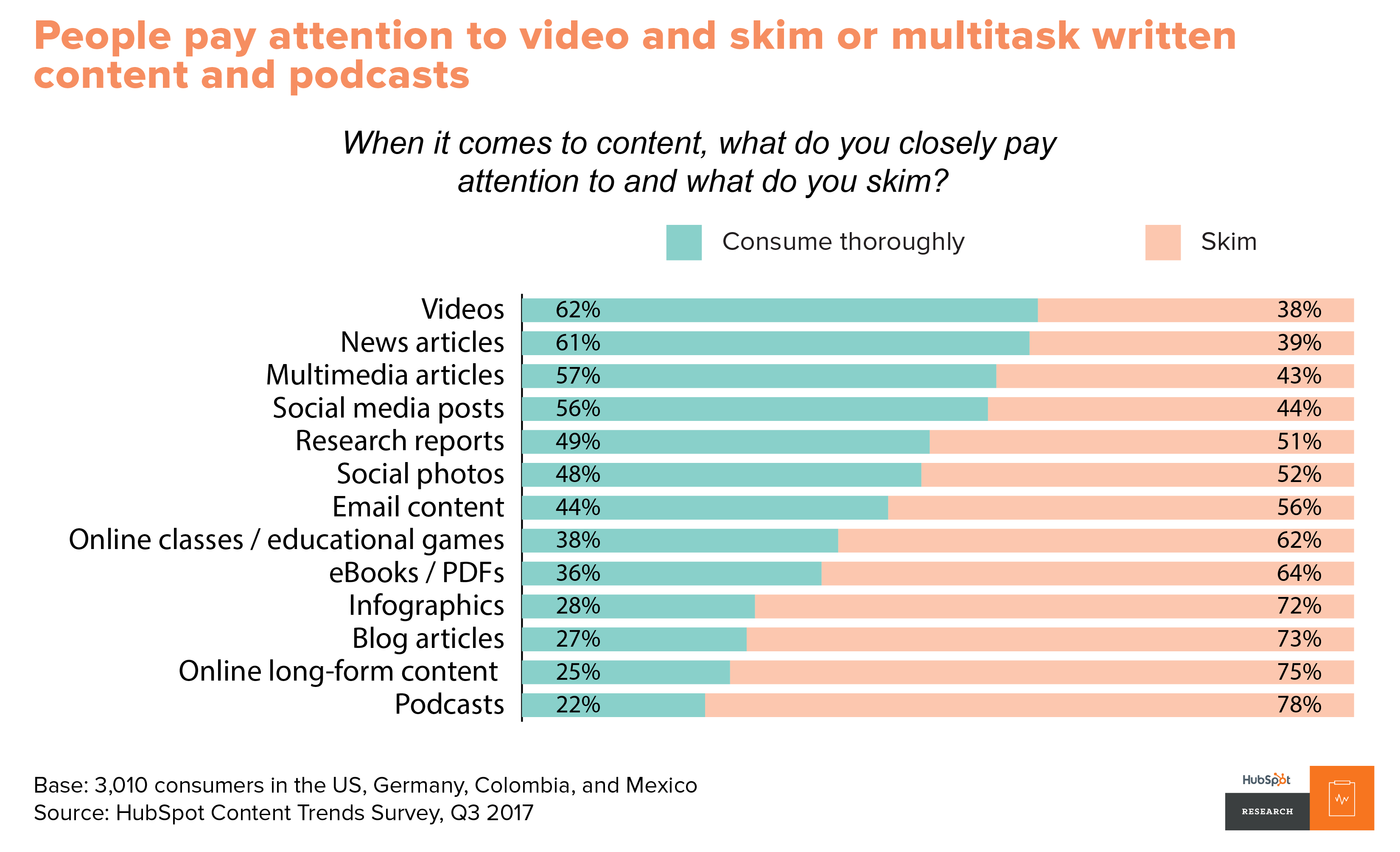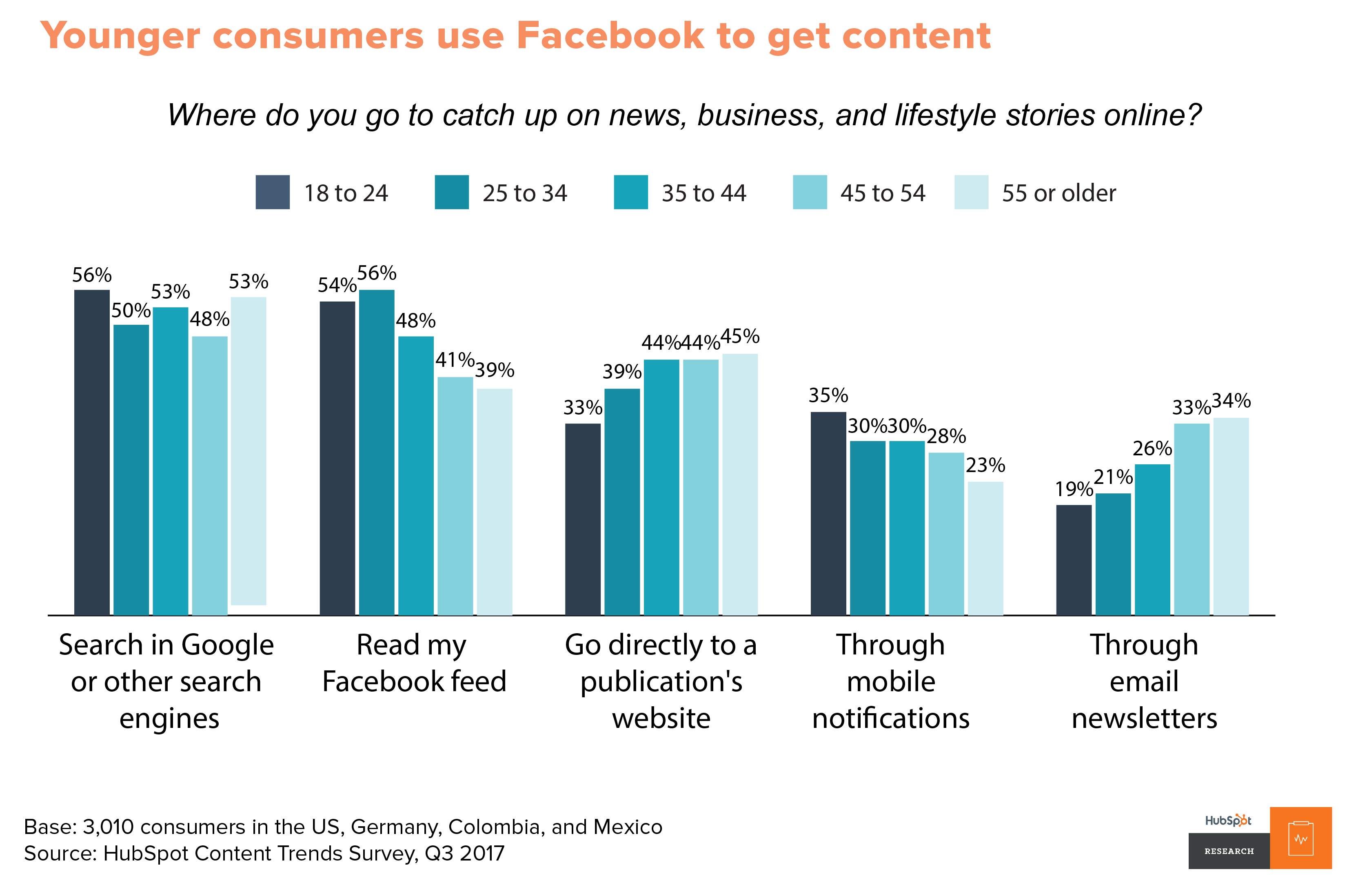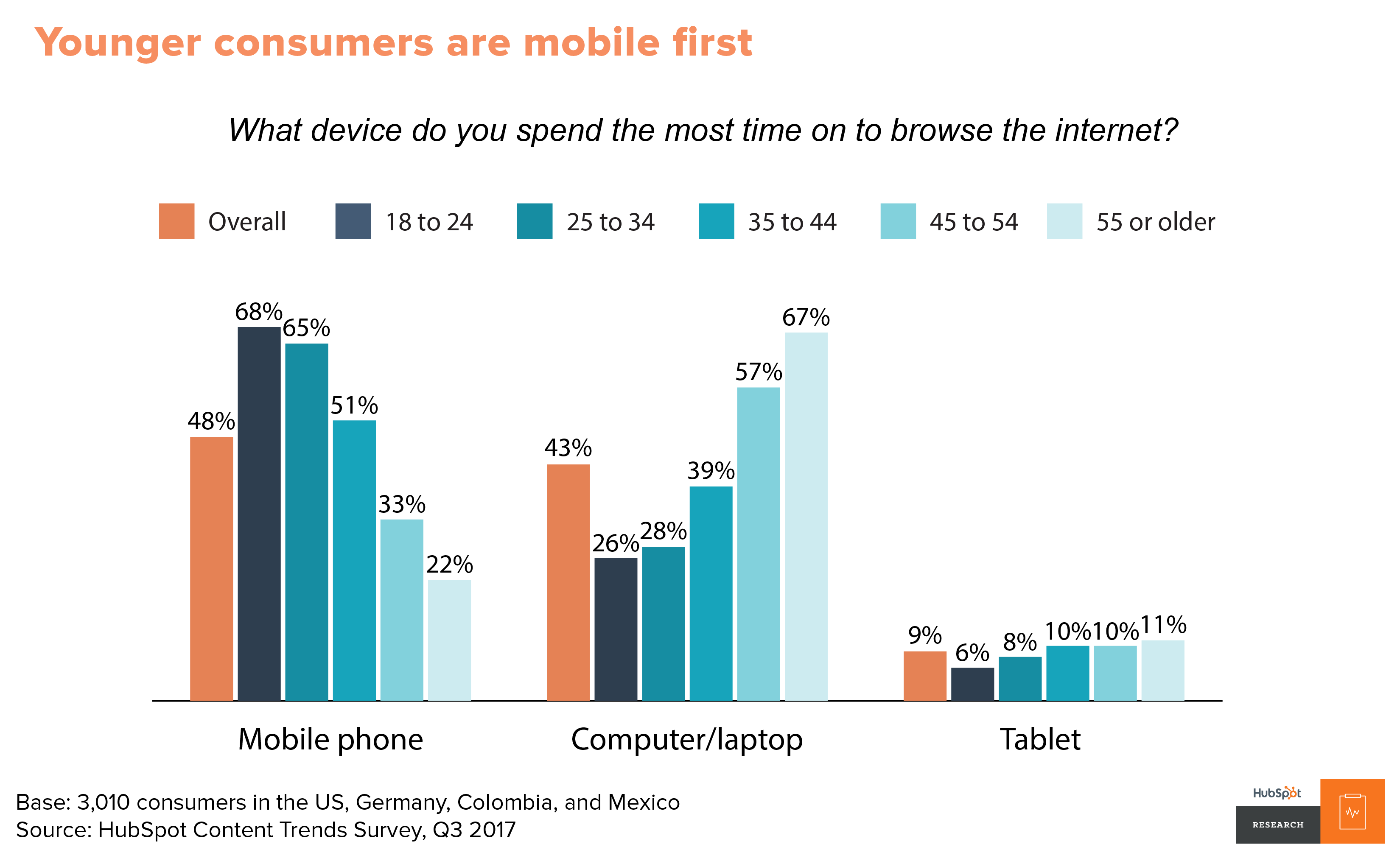
We’ve said it before and we’ll say it again—the way in which the world digests information is changing. As we move further towards a future of universal internet access, buyer behaviour has shifted as your sales team is now no longer the sole gatekeeper of information relating to your product or service. Variations in the way different generations interact with information also means that buyer behaviour can depend massively on the age group you wish to target. So-called ‘millennials’ are no longer children that dream of one day becoming scientists—they are scientists, and the way they interact with content can be vastly different from ‘generation Xers’ and ‘baby boomers’.
At the end of 2017, HubSpot published the findings of a digital trends report that aimed to lay bare the differences in the ways different generations absorb information, asking survey respondents about the kinds of channels they use to access content and the type of content they respond to.
So, what were the findings of the report, and what do they mean for companies working in the life science industry? Can these findings be applied to help us communicate our offering to the right people in the right way? Here are three ways that generational differences could impact on life science marketing campaigns of the future.
1. Video content is more engaging for younger generations
If you’re a regular user of social media platforms such as Facebook and Twitter, you may have noticed over the past few years that the content of your news feed has shifted, with more and more video-based content and less text and static images. This is no accident. The data shows time and again that for younger generations, video content is far more engaging when featured on social media platforms compared to traditional content types. In their report, HubSpot showed that millennials are far more likely to pay close attention to video content, and have a tendency to skim traditional material such as long-form content and even podcasts.

This however, is very much dependent on the age of the consumer—with younger consumers having a stronger preference for video, and older generations having a more traditional taste for articles and email content.
So, what does this mean for life science companies? It means that taking a strategic, buyer persona-driven approach to your marketing activities has never been more important. You can still communicate your unique products/offering to the scientists that really need them, but ensuring you promote yourself via the right content channel for that persona (or a range of content types spanning from the traditional to the ‘cutting-edge’ if you’re targeting a variety of personas) will mean you are able to speak to the right audience. Does your buyer persona portray a 25-35 year old who is a regular user of social media platforms like Facebook and Twitter? Then experiment with video. Are they an over-50 who prefers more-traditional print articles? Then opt for longer-form content.
Your revolutionary product or service will still be revolutionary if your target is a scientist in their late 20s or early 50s, but the way you communicate that product needs to be different for each. Don’t overlook any individual approach, and certainly don’t underestimate video—as even Facebook is aiming to become primarily a video-based platform by 2021.
2. Facebook is now challenging Google as the go-to platform for content browsing for younger generations
As part of its research, HubSpot asked consumers which platforms they use to engage with content they are interested in. It may come as no surprise that Google remains top of the tree in this respect, but only 52% responded that they use Google (and other search engines) to keep up with the latest news, business and lifestyle stories. A close second was Facebook. Consumers reported that the social media platform is now a major channel for content browsing, making it nearly as influential as the search engine giant.

This represents a telling shift in consumer preference. Google doesn't have a ‘feed’ or ‘homepage’ as such, but requires the user to actively input their content request and browse through the search findings. With Facebook, the user scrolls down a populated news feed and engages with content they are presented with—stopping when they find something that captures their interest or speaks to them personally. This behaviour again can be pinned down by generation, with generation Xers and baby boomers favouring search engines compared to millennials.
This is another valuable lesson that can be applied to life science marketing, and one perhaps unexpected result is that the SEO strategies we apply for search engines will have to be repurposed to apply to other platforms such as Facebook and even YouTube. However, the key takeaway here is that the creation of relevant, engaging and highly-targeted content will continue to be important.
3. Younger generations are mobile-first
This will come as no surprise to many, but is nonetheless critical if your high-value content is to be engaging for a wide segment of your target audience. HubSpot’s consumer survey demonstrated that when it comes to the millennial generation’s web-surfing habits, mobile is very much king. Of the 3010 consumers surveyed, 68% of 18-24 year olds and 65% of 25-34 year olds said they prefer to surf the net on mobile devices compared to desktop or laptop computers (compared to just 33% and 22% of 45-54 year olds and over 55's respectively). I myself fall within the 25-34 age group, and don’t even own a laptop for non-work use. I do all of my online searching, reading and shopping using the computer in my pocket—my smartphone.

This means that whichever type of content you are developing, you should ensure that it is mobile- and desktop-friendly whenever possible. If you’re developing an HTML email to promote your content, make sure it renders well across a range of devices in order to have a maximum impact. Emails are not necessarily the best way to get in touch with millennials, but creating an email blast that looks appealing on a desktop computer—but is illegible on mobile devices—will be sure to alienate anyone trying to open your email on the go. If you’re working on an eBook that is targeted at scientists spanning multiple age groups, then make sure it reads well on a range of devices. You can use different methods to get that content into the hands of your different buyer personas, but if the end product wasn’t built with different platforms in mind, then its value to your customers, and therefore to you, decreases instantly.
As younger generations begin to have more purchasing power, it will become even more important to tailor your marketing activity towards them—taking a truly customer-centric approach. Really understanding your audience’s needs, pain points, means of communication and information digestion preferences will help you to better engage with them, and ultimately enable you to market and sell more effectively.
If you would like to find out more about how the modern marketing landscape is changing and what tips and tricks you can utilise to connect you with your ideal customers, then why not subscribe to our newsletter?




